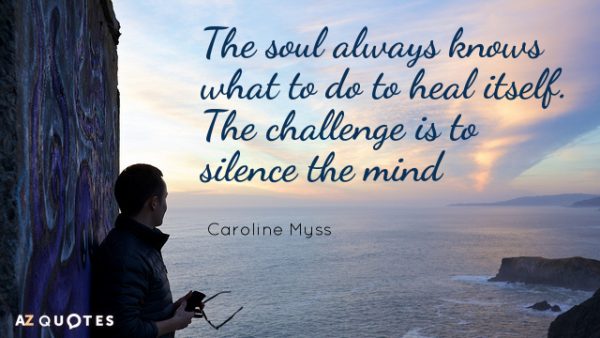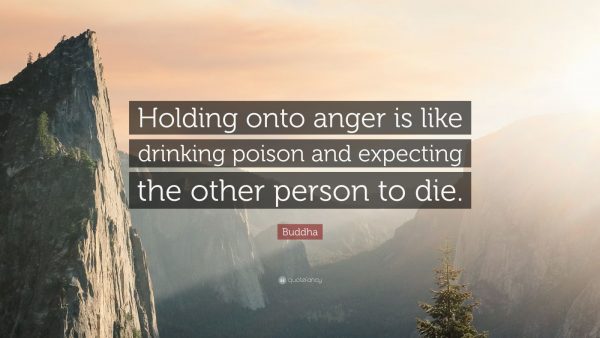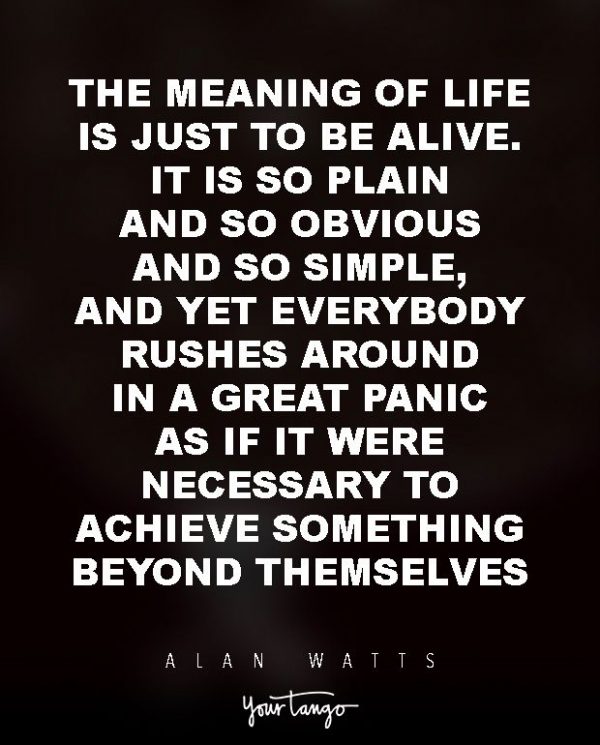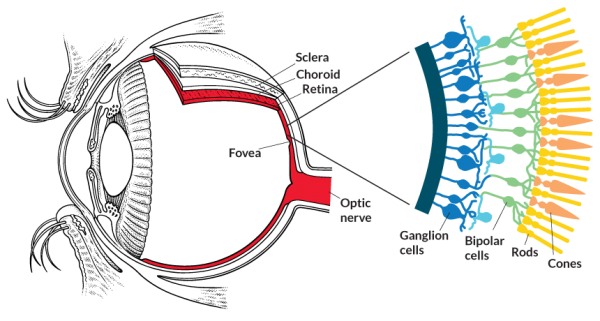




In the mid-’90s,the CDC and Kaiser Permanentediscovered an exposure that dramatically increased the riskfor seven out of 10 of the leading causes of death in the United States.In high doses, it affects brain development,the immune system, hormonal systems,and even the way our DNA is read and transcribed.Folks who are exposed in very high doseshave triple the lifetime risk of heart disease and lung cancerand a 20-year difference in life expectancy.And yet, doctors today are not trained in routine screening or treatment.Now, the exposure I’m talking about is not a pesticide or a packaging chemical.It’s childhood trauma.Okay. What kind of trauma am I talking about here?I’m not talking about failing a test or losing a basketball game.I am talking about threats that are so severe or pervasivethat they literally get under our skin and change our physiology:things like abuse or neglect,or growing up with a parent who struggles with mental illnessor substance dependence.Now, for a long time,I viewed these things in the way I was trained to view them,either as a social problem — refer to social services –or as a mental health problem — refer to mental health services.And then something happened to make me rethink my entire approach.

>> Our brains develop and change throughout life,enabling us to learn and do new thingsand to adapt at every age.But childhood, and early childhood in particular,is the most sensitive and critical periodfor brain development.As a child interacts with the world, their experiences,both positive and negative, stimulate the brain,causing it to form neural pathways that lay the foundationfor lifelong cognitive and behavioral functioning.>> I like to think of brain development as the brain islike a, the site of a town so you can lay out roadwork.You’re laying down roads according to,in the brain’s case, according to experiences.So you have an experience and your brain laid down a path.And the more you have that experience,the bigger that path is going to get and the stronger,and then it’s paved, it becomes a real road in a highway.And you’re laying out the gridworkof the town according to your experiences.And that’s very much like the brain development.The more you have experiences,the stronger those electrical circuits are going to be.And that’s going to shape the way you think,and act, and view the world.>> Safe, stable, nurturing relationshipsand environments provide the contextfor healthy brain developmentwhen children have ample opportunitiesto learn and explore.In this setting, children acquire a range of experiencesthat stimulate different parts of the brain allowingfor healthy, balanced development.Some degree of adversity and stress is a normaland essential part of human developmentthat can help children learn how to react to future challenges.But a child who’s repeatedly exposed to adversitieslike abuse, neglect, or unstable relationshipsand environments may experience what’s known as toxic stressand this can disrupt brain development.>> Our experiences literally shape the way our brain isdeveloping and the brain architecture.So if you have a baby, a very young baby,who cries when they’re hungry and mother comes overand feeds the baby and helps the baby settle down,the baby goes back to sleep, that happens, what,five, ten times a day.And that is laid down as electrical circuits are laiddown in the brain and so the baby learns that you cry,you get fed, you sooth, and you go to sleep.And that experience is sort of coded into the brain,just like any other experience.So good experiences help the brain develop in a certain way.And if you have adverse experiences,that same baby cries, and cries, and criesand the parents are addicted to opiate drugs, let’s say.And they ignore the baby.The baby is left alone for ten hours in the dark.That baby’s brain is still developingbut it’s developing in a different way.Their experience is much differentand so it is developing in a way that says, “You can cry,and cry, and cry and escalatethat stress response as much as you want.Nothing is going to happen.”And the interpretation of that is not only is the brainrealizing that they’re not going to get soothed,but the child learns, and this is laid down in the brain,the child learns that the world is an unsafe place,that they are insignificant.There’s no one out there to help them.And that is all laid down in the brain as well.>> There are different forms of stressthat any individual is exposed to.There’s positive stressthat oftentimes is very short term but, you know,it’s something that everybody experiences.So even if you said, you know, waking up in the morning,going to work, going to school, that’s, you know,one form of stress, very short term but somethingthat your body has to adjust to.You can have very neutral forms of stressthat are a little bit longer term but things in which,you know, there are resources and support that help you adaptto it, whereas there’s other kinds of thingsthat are more long term kinds of negative stress and that’swhere toxic stress really fits into.Things in which person doesn’t have,or an individual does not have the kind of resourcesand support to try to deal with it and it has a negative effectin a long term consequences on that particular individual.So it’s toxic in the senseof the body responds to that stress.You know, one of the thingsthat is produced is a hormone called cortisoland that constant production of cortisol has a negative effecton brain development, on neurological development,and on other kinds of organs and tissues in the body.>> When we experience stress or encounter a threat,the brain triggers the body to produce hormonesthat activate a stress response, or what’s often referredto as the fight or flight response.In a moment of crisis, this response is necessaryand potentially life-saving.But stress can become toxicwhen the stress response system is activated frequentlyor for prolonged periods of time.If a child is constantly afraid, her body and brain will remainon high alert, preparing her to react should a threat return.Her body will continually produce stress hormonesand the stress response system will remain activatedin her brain, drawing energy away from other neural pathwaysin need of development or maintenance.In a child experiencing toxic stress, parts of the brainthat might be weakened are those regulating complex functionslike emotional self-regulation, social interactions,and abstract thinking.This may have consequences throughout life and can resultin social, behavioral, and cognitive challenges.>> Toxic stress implies a certain level of adversityand that often occurs early in life, within childhood.So children who have experienced adverse childhood experienceshave been found through very diligent research to beat increased risk for a number of long term problemswhen they reach adolescence and adulthood,and these problems really span multiple domains.They can be behavioral problems, emotional problems,and physical problems.So if you think about it,children who have had early adversity are at higher risk,much higher risk for major depression and suicidality,for anger management problems, for delinquencyand high risk behavior, for dropping out of school,for teen pregnancy, for runaway behavior, for adult criminality,and for liver disease, and lung disease,and heart disease among other things.So it has a profound long term impact potentially.>> And yet the brain is capable of healing and changing.Effective treatments can help those affectedby early adversity and give them a chance to heal from traumasand learn new ways to interpret and reactto stressors and other stimuli.Fortified by this information,we can shift the conversation away from one that blamesand punishes people for inappropriate reactionsand behaviors that developed in childhood dueto adversity and trauma.Instead, we can champion the need for expanded servicesand opportunities that help people overcome early adversity.And we can focus on ways to prevent abuse, neglect,and other challenges before they occur.>> I don’t want to imply that any childwho experiences early adversity is on a missionwhere they inevitably will experience these adverse affectslong term.That’s not the case at all.Many kids are resilient and so they are ableto overcome this adversity very early onand prevent the long term effects.Some adults will experience those long term effectsbut there are ways that we can help the adults.And very often — I work at a child sexual abuse clinic –and very often our parents will come in, the mother will come inand say, “My daughter was sexually abused,” and it comesout while I’m talking to herthat she was sexually abused as well.She never got therapy.So for 20 years she’s been living with this experienceand hasn’t told anyone.That’s not too late.She can still get help.She can still get therapy.She can still work through that.She can still kind of overcome that and move onand not have an increased risk of adversity.There are other social programs that are helpful.For example, programs that help people develop someof those skills that maybe they didn’t develop early on,that the skills are related to planning,controlling their emotions, and controlling their impulses,and getting hold of that automatic response,that jump to anger, getting hold of that, calming it down,learning how to do that can help tremendously.>> CDC is the nation’s public health agency and as such,are really interested in those factors, risk factors,and protective factors, that influence health.And it turns out that early adversity in the formof violence and other adverse events has a profound impacton health throughout the lifetime.Mental health impacting infectious diseasesas well as chronic diseases.So, as such, early adversity and the influenceof that is critically importantfrom the public health standpoint.And it’s strategic.If we can reduce or eliminate early adversity,we can have an enormous impact on healthof the U.S. population and, in fact,people around the world during the courseof their entire lives.>> In lesson two, you’ll learnabout the CDC-Kaiser Permanente Adverse Childhood ExperiencesStudy and about findings from the study that can aidin our efforts to prevent and treat ACE’s.
>> In this lesson, you’ll learn how exposure
to childhood adversity is linked to negative health outcomes
and reduced life opportunities, such as education,
employment, and income.
Much of what we know about the links between ACEs
and long-term outcomes is a result of the findings
from the CDC Kaiser Permanente Adverse Childhood Experiences
study, or the ACE study.
The ACE study was one of the largest investigations
of the associations between childhood adversities
and adult health and wellbeing.
The study was conducted
at a Kaiser Permanente health facility
in southern California from 1995 to 1997.
Over 17,000 participants over the age
of 18 received physical exams
and completed controversial surveys
about their childhood experiences
and their current health status and behaviors.
The study looked at 10 ACEs organized
into the following three categories.
One, abuse.
Two, neglect.
And three, household challenges.
Take a moment to review the 10 ACEs included
in the CDC Kaiser Permanente ACE study.
you’re a doctorand you see 100 kids that all drink from the same well,and 98 of them develop diarrhea,you can go ahead and write that prescriptionfor dose after dose after dose of antibiotics,or you can walk over and say, “What the hell is in this well?”So I began reading everything that I could get my hands onabout how exposure to adversityaffects the developing brains and bodies of children.And then one day, my colleague walked into my office,and he said, “Dr. Burke, have you seen this?”In his hand was a copy of a research studycalled the Adverse Childhood Experiences Study.That day changed my clinical practice and ultimately my career.The Adverse Childhood Experiences Studyis something that everybody needs to know about.It was done by Dr. Vince Felitti at Kaiser and Dr. Bob Anda at the CDC,and together, they asked 17,500 adults about their history of exposureto what they called “adverse childhood experiences,” or ACEs.Those include physical, emotional, or sexual abuse;physical or emotional neglect;parental mental illness, substance dependence, incarceration;parental separation or divorce;or domestic violence.For every yes, you would get a point on your ACE score.And then what they didwas they correlated these ACE scores against health outcomes.What they found was striking.Two things:Number one, ACEs are incredibly common.Sixty-seven percent of the population had at least one ACE,and 12.6 percent, one in eight, had four or more ACEs.The second thing that they foundwas that there was a dose-response relationshipbetween ACEs and health outcomes:the higher your ACE score, the worse your health outcomes.For a person with an ACE score of four or more,their relative risk of chronic obstructive pulmonary diseasewas two and a half times that of someone with an ACE score of zero.For hepatitis, it was also two and a half times.For depression, it was four and a half times.For suicidality, it was 12 times.A person with an ACE score of seven or morehad triple the lifetime risk of lung cancerand three and a half times the risk of ischemic heart disease,the number one killer in the United States of America.Well, of course this makes sense.Some people looked at this data and they said, “Come on.You have a rough childhood, you’re more likely to drink and smokeand do all these things that are going to ruin your health.This isn’t science. This is just bad behavior.”It turns out this is exactly where the science comes in.We now understand better than we ever have beforehow exposure to early adversityaffects the developing brains and bodies of children.It affects areas like the nucleus accumbens,the pleasure and reward center of the brainthat is implicated in substance dependence.It inhibits the prefrontal cortex,which is necessary for impulse control and executive function,a critical area for learning.And on MRI scans,we see measurable differences in the amygdala,the brain’s fear response center.So there are real neurologic reasonswhy folks exposed to high doses of adversityare more likely to engage in high-risk behavior,and that’s important to know.But it turns out that even if you don’t engage in any high-risk behavior,you’re still more likely to develop heart disease or cancer.The reason for this has to do with the hypothalamic–pituitary–adrenal axis,the brain’s and body’s stress response systemthat governs our fight-or-flight response.How does it work?Well, imagine you’re walking in the forest and you see a bear.Immediately, your hypothalamus sends a signal to your pituitary,which sends a signal to your adrenal gland that says,”Release stress hormones! Adrenaline! Cortisol!”And so your heart starts to pound,Your pupils dilate, your airways open up,and you are ready to either fight that bear or run from the bear.And that is wonderfulif you’re in a forest and there’s a bear.(Laughter)But the problem is what happens when the bear comes home every night,and this system is activated over and over and over again,and it goes from being adaptive, or life-saving,to maladaptive, or health-damaging.Children are especially sensitive to this repeated stress activation,because their brains and bodies are just developing.High doses of adversity not only affect brain structure and function,they affect the developing immune system,developing hormonal systems,and even the way our DNA is read and transcribed.So for me, this information threw my old training out the window,because when we understand the mechanism of a disease,when we know not only which pathways are disrupted, but how,then as doctors, it is our job to use this sciencefor prevention and treatment.That’s what we do.So in San Francisco, we created the Center for Youth Wellnessto prevent, screen and heal the impacts of ACEs and toxic stress.We started simply with routine screening of every one of our kidsat their regular physical,because I know that if my patient has an ACE score of 4,she’s two and a half times as likely to develop hepatitis or COPD,she’s four and half times as likely to become depressed,and she’s 12 times as likely to attempt to take her own lifeas my patient with zero ACEs.I know that when she’s in my exam room.For our patients who do screen positive,we have a multidisciplinary treatment team that works to reduce the dose of adversityand treat symptoms using best practices, including home visits, care coordination,mental health care, nutrition,holistic interventions, and yes, medication when necessary.But we also educate parents about the impacts of ACEs and toxic stressthe same way you would for covering electrical outlets, or lead poisoning,and we tailor the care of our asthmatics and our diabeticsin a way that recognizes that they may need more aggressive treatment,given the changes to their hormonal and immune systems.So the other thing that happens when you understand this scienceis that you want to shout it from the rooftops,because this isn’t just an issue for kids in Bayview.I figured the minute that everybody else heard about this,it would be routine screening, multi-disciplinary treatment teams,and it would be a race to the most effective clinical treatment protocols.Yeah. That did not happen.And that was a huge learning for me.What I had thought of as simply best clinical practiceI now understand to be a movement.In the words of Dr. Robert Block,the former President of the American Academy of Pediatrics,”Adverse childhood experiencesare the single greatest unaddressed public health threatfacing our nation today.”And for a lot of people, that’s a terrifying prospect.The scope and scale of the problem seems so large that it feels overwhelmingto think about how we might approach it.But for me, that’s actually where the hopes lies,because when we have the right framework,when we recognize this to be a public health crisis,then we can begin to use the right tool kit to come up with solutions.From tobacco to lead poisoning to HIV/AIDS,the United States actually has quite a strong track recordwith addressing public health problems,but replicating those successes with ACEs and toxic stressis going to take determination and commitment,and when I look at what our nation’s response has been so far,I wonder,why haven’t we taken this more seriously?You know, at first I thought that we marginalized the issuebecause it doesn’t apply to us.That’s an issue for those kids in those neighborhoods.Which is weird, because the data doesn’t bear that out.The original ACEs study was done in a populationthat was 70 percent Caucasian,70 percent college-educated.But then, the more I talked to folks,I’m beginning to think that maybe I had it completely backwards.If I were to ask how many people in this roomgrew up with a family member who suffered from mental illness,I bet a few hands would go up.And then if I were to ask how many folks had a parent who maybe drank too much,or who really believed that if you spare the rod, you spoil the child,I bet a few more hands would go up.Even in this room, this is an issue that touches many of us,and I am beginning to believe that we marginalize the issuebecause it does apply to us.Maybe it’s easier to see in other zip codesbecause we don’t want to look at it.We’d rather be sick.Fortunately, scientific advances and, frankly, economic realitiesmake that option less viable every day.The science is clear:Early adversity dramatically affects health across a lifetime.Today, we are beginning to understand how to interrupt the progressionfrom early adversity to disease and early death,and 30 years from now,the child who has a high ACE scoreand whose behavioral symptoms go unrecognized,whose asthma management is not connected,and who goes on to develop high blood pressureand early heart disease or cancerwill be just as anomalous as a six-month mortality from HIV/AIDS.People will look at that situation and say, “What the heck happened there?”This is treatable.This is beatable.The single most important thing that we need todayis the courage to look this problem in the faceand say, this is real and this is all of us.I believe that we are the movement.Thank you.


